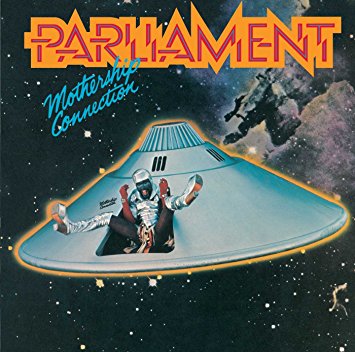In an older post of mine entitled “Everything Comes from the Fractal” I discussed the role of the fractal within African culture as well as the way, it applies to the controlling ideas and subjects featured in the literature we have read throughout the semester. In this post, I plan to expand upon this and demonstrate an example of one of the fractal thru-lines present in the last The Last Angel of History. This movie, while cheesy and dated gives a vivid example of a “fractal” that presents itself in music, art, and literature.
As an avid music fan and musician myself, I was fascinated by the juxtaposition of three artists in particular: George Clinton and Parliament Funkadelic, Sun Ra, and Lee Perry. These artists all engaged in different genres of music that being funk, jazz, and reggae respectively. They all come from different places, drawing from different influences and yet there is a distinct commonality throughout all their work; space, interstellar travel, science fiction, and the idea that African Americans are bound for something beyond than this world. These things all form the foundation of their music.
But how does this embody a fractal? How does this display the repetition and revision that is so abundant black culture? Clearly, these three artists are not alone. The individuals featured in The Last Angel of History all possess the same fascination with science fiction. Dr. Bernard A. Harris, for example, is an astronaut who the filmmakers interviewed. In his segment, Harris describes a fascination with science fiction that prompted his choice in career and professes his desire to see black people take a greater role in space exploration. In another segment features Greg Tate, a writer, claims
“Well, I’ve always contended that black existence and science fiction are one and the same. And that’s from someone who has obviously experience life as a black person and has been reading science fiction since he was maybe nine or ten.”
What we have here are musicians, writers and even astronauts all of whom are black that all cite the same things as informing what they do and why they do it. It goes beyond them simply being interested in science fiction or the future, but rather ties directly into their experience as African Americans and the feelings of alienation that they have all experienced throughout their lives. Science fiction is a means of understanding who they are and what they can be. It has become prominent and intensely relatable to these people, so much so that it is now an inseparable part of their art and literature.
This brings me to a line from African Fractals, which discusses recursion, “The cultural categories begin with the concrete instances of recursive construction techniques and gradually move toward the abstractions of recursion as symbolized in African iconography.” Yes, this line is referring to recursion in African architectural design, but it nonetheless echoes the overwhelmingly present streak of science fiction elements in the works of black artists discussed in The Last Angel of History. These futurist elements are thus the “fractal”, and the creations of these artists are recursions on it, their individual voices creating a rich, complex conversation, and reflecting how a single issue can echo throughout countless other art forms. They are in this regard repetitions of a greater “fractal”, little variations taking part on a greater whole. All different reflections of the same ideas and principles.
Works Cited:
- African Fractals by Ron Eglash
- The Last Angel of History by John Akomfah
- Mothership Connection by Parliament Funkadelic (Featured Image)

